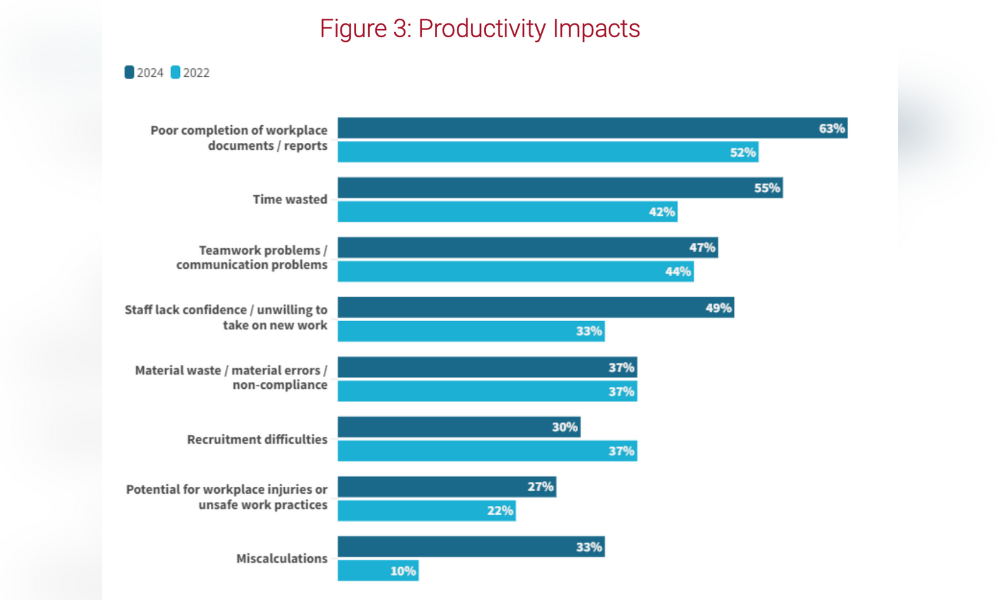
New report says employers 'need to get basics right' to boost productivity

A new survey from the Australian Industry Group (Ai Group) has revealed that 88% of businesses are impacted by low levels of language, literacy, numeracy, and digital literacy (LLND) among employees.
The report, Counting the cost: Addressing the impacts of low levels of literacy and numeracy in the workplace, found that 21% of employers are highly impacted by low levels of literacy and numeracy.
Another 36% are also moderately affected by the issue, according to the report, which surveyed 251 businesses employing 291,232 people.

Source: Ai Group
According to the report, Counting the cost: Addressing the impacts of low levels of literacy and numeracy in the workplace, employees struggling with LLND are strongly impacting an organisation's productivity.
These struggling employees have trouble completing documents and tasks. They also waste time, as well as fail to communicate and take part in teamwork.
"Productivity is the key to improving the everyday lives and pay packets for every Australian, and this report shows we need to get the basics right to improve it," said Ai Group Chief Executive Innes Willox in a statement.

Source: Ai Group
Willox said Australia needs to take the opportunity to remove barriers to people getting a job and for employers to keep improving employees' skill sets.
"Governments are rightly focusing on language, literacy, numerical, and digital literacy, and it is welcome that federal programs such as Skills for Education and Employment are now available in the workplace," the Ai chief executive said.
According to Willox, increasing the language, literacy, and numeracy skills of employees can potentially uplift business productivity.
"Part of the solution is ensuring programmes are accessible for employers through workplace and vocational delivery models," he said. "Government, education and training providers, industry, and individuals need to work together to get this right."